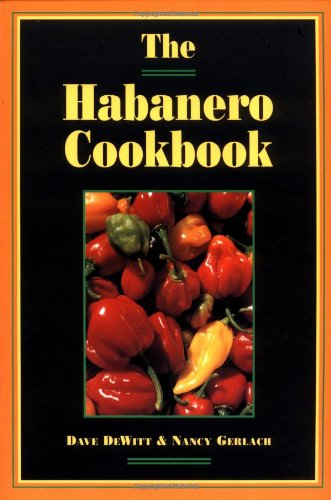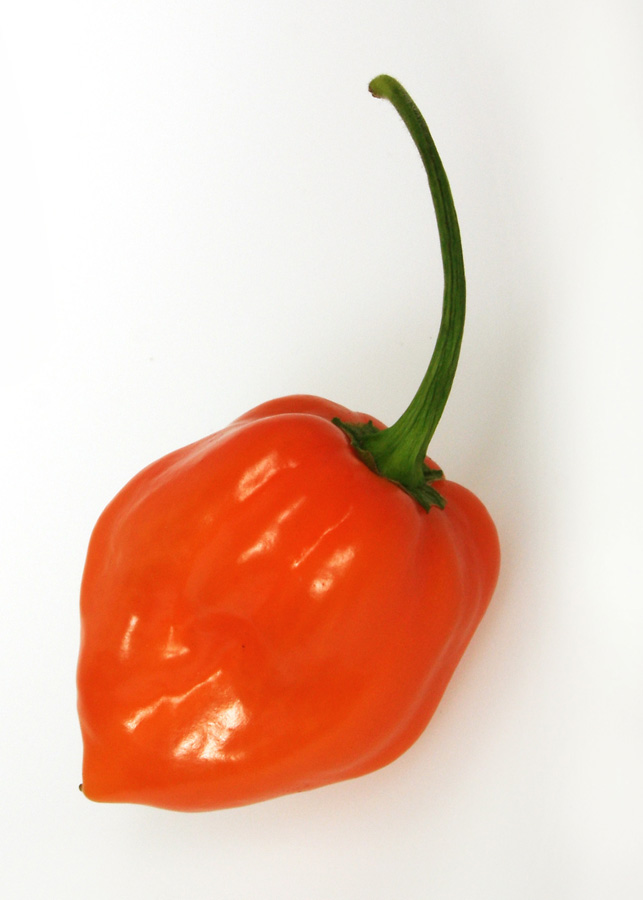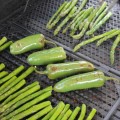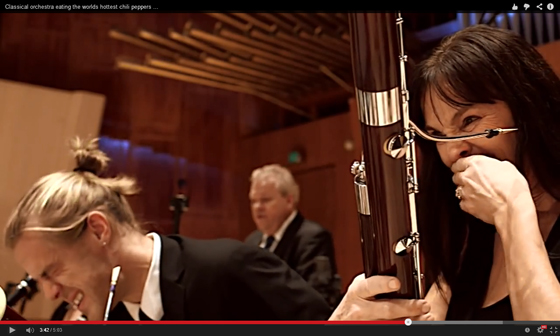Editor’s Note: The following is an excerpt from The Habanero Cookbook, by Dave DeWitt and Nancy Gerlach. Berkeley, CA: Ten Speed Press, 1995. Occasionally, I discussed close relatives of the habanero—the datil pepper and the Scotch bonnet—within the general context of “habaneros.”

How is it that an obscure pepper like the habanero became the chile of choice in the United States in about a decade? To answer that question, we have searched what little literature is available on the subject, interviewed habanero-heads, and traveled to the centers of habanero culture in this country. And, of course, as editors of Chile Pepper magazine, we were right smack in the middle of all the habanero hoopla and were undoubtedly responsible for a lot of it.
Habaneros: A Brief but Hot History
Although the chinense variety known as the datil pepper has been grown near St. Augustine, Florida, for hundreds of years, the other varieties of the species were virtually unknown in this country until quite recently. The first detailed discussion of the species appeared in the Bulletin of the Toney Botanical Club in 1957. Botanists Paul G. Smith and Charles B. Heiser, Jr. (who spelled the species “sinense”) wrote that they collected seeds for ten years in order to study the species and eventually grew plants from eight-five different lots of seed at the University of California, Davis and Indiana University. They wrote that the smallest- podded plants they grew came from British Guiana (now Guyana).
At the time that Smith and Heiser were writing, the only habanero products in the United States were the occasional bottles of Caribbean hot sauces brought back by tourists—except for one domestic product, Scotch Bonnet, a sherry-pepper sauce. Amazingly enough, this first U.S.-made habanero product goes back more than a century. Pepper sauce manufacturer Louis Borie, of Richmond, Vermont, tells the story: “My family has been producing Scotch Bonnet for more than one hundred years. As best as I can determine, my great-great grandfather began making the product for himself and, eventually, some friends in the Philadelphia area. My grandfather started selling it through John Wagner and Sons some time in the early part of the century. My father continued to make the product for Wagner’s, and when he died several years ago, I took over production.
“Wagners has never made much of an effort to market the product outside of the Philadelphia area, probably because they assumed there was little market for it. Consequently, production has been limited, although I know my grandfather did make it in some quantity in the thirties and forties. I am making more of an effort to market the product now that peppers and hot foods have become more popular.
“My family has always grown the Scotch bonnets in the Philadelphia area and now in Vermont. The pepper seed has apparently been in our family since my ancestors emigrated from France to the United States by way of Haiti in the early 1800s. The story is that they had to flee Haiti during a slave uprising and managed to take a few pepper seeds with them.”
The next habanero products available commercially in the United States were hot sauces imported in the 1970s. It is quite difficult to track down the precise dates when regular importation of the various chinense- containing sauces began, but we do know that in the early 1970s, Matouk’s Hot Sauce from Trinidad was imported into the United States through Brooklyn, New York, and two versions of Jamaica’s Pickapeppa (one mild, one quite hot) began appearing in U.S. groceries.
Interest in the habanero and its cousins was piqued in 1984, when Jean Andrews described the species in her book Peppers: The Domesticated Capsicums. “This is the chili pepper that separates the men from the boys,” she wrote, and portrayed it as the “secret weapon” of Louisiana pepper-eating contests.
It is difficult to determine which of the U.S. datil sauces was the first on the market, but we do know that Chris Way was packaging his Dat’l Do It in 1981 (see pages 30—31). Other datil sauces of the 1980s included Liquid Summer, manufactured by blues musician Bill Wharton, and Salsa del Diablo, made by Jeff Campbell and only sold from his roadside stand in Stonewall, Texas.
Recipe: Belizean Habanero Hot Sauce
With its carrot base, this was the classic bottled habanero hot sauce and the prototype for many to follow. In order to preserve the habanero’s distinctive flavor, we don’t cook the chiles with the other vegetables, but instead add them afterward. To cut the heat of this very hot sauce, increase the amount of carrot or decrease the number of chiles. This sauce will keep for months in the refrigerator. Use this sauce for cooking as well as a table condiment. It goes particularly well with seafood dishes.

Photo by Harald Zoschke
Belizean Habanero Hot Sauce Ingredients
- 1 small onion, chopped
- 2 cloves garlic, chopped
- I tablespoon vegetable oil
- 1 cup chopped carrots
- 2 cups water
- 3 to 4 habaneros, seeds and stems removed, chopped
- 3 tablespoons fresh lime juice
- 2 tablespoons white vinegar
- ½ teaspoon salt
Instructions
- In a skillet, saute the onion and garlic in the oil until soft. Add the carrot and water and bring to a boil. Reduce the heat and simmer until the carrots are soft.
- Remove from the heat and transfer the mixture to a blender or food processor. Add the chiles, lime juice, vinegar, and salt and puree until smooth. Serve at room temperature or chilled.
Yield: 1 ½ cups
Heat Scale: Extremely hot
Latest posts by Dave DeWitt (see all)
- Enchiladas Verdes con Chile Pasado - 02/08/2023
- Smoked Oysters with Ancho Chile Sauce - 01/13/2023
- Machaca Sierra Madre - 01/11/2023









